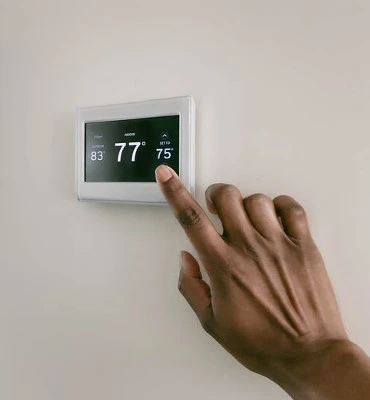IRVINE
cooling
-
Call Us Now
(949) 394 0845 -
Opening Hours
- Mon - Fri: 7am - 9 pm
- Saturday: 8am - 4 pm

What Temperature Should You Set Your AC?
As the sun blazes outside and the heat becomes nearly unbearable, the air conditioner in your home or workplace becomes a lifeline to comfort.
What's the difficulty?

-
The challenge lies in finding the perfect balance between staying cool and keeping energy costs in check. This comprehensive guide will explore the factors influencing the ideal temperature setting for your air conditioner. We'll also consider the impact on your comfort, health, energy efficiency, and the environment. Air conditioning contributes to a comfortable life but can cause harm if misused.
-
Setting your air conditioner to the optimal temperature isn't just about staying comfortable; it's also about making informed choices that affect your energy consumption, monthly bills, and environmental impact. It's a balance between personal comfort and responsible energy use.
-
The "sweet spot" in air conditioning is the temperature you feel most comfortable in without overcooling your space. It's about achieving the right balance between comfort and efficiency.
-
- Geographic Location: Where you live plays a significant role in determining the ideal AC temperature. People in hot, arid regions may prefer cooler settings, while those in milder climates might opt for slightly warmer indoor temperatures.
- Indoor vs. Outdoor Temperature: The temperature outside and humidity levels directly influence the temperature at which you'll feel most comfortable indoors.
- Occupancy and Activity Level: The number of people in a room and their activity levels impact the temperature you should set. A house of active individuals may require more relaxed settings than an empty, quiet space.
- Personal Comfort Preferences: Everyone's comfort preferences vary. Some prefer a more fantastic environment, while others are comfortable at slightly warmer temperatures.
- Health Considerations: Certain health conditions, such as allergies, asthma, or respiratory issues, require specific temperature and humidity settings for comfort and well-being.
-
In the following sections, we'll explore the practical aspects of energy efficiency, cost, and environmental impact.
-
- Energy-Saving Strategies: Efficient use of your air conditioner can lead to substantial energy savings. This section delves into strategies like proper insulation, air sealing, and shading to optimize energy efficiency.
- The Impact on Your Utility Bills: Discover how your temperature setting affects your monthly utility bills. We'll discuss the financial implications of setting your AC too low or too high.
- Smart Thermostats and Automation: Learn how smart thermostats and automation technologies can help you maintain the perfect temperature while conserving energy and reducing costs.
-
Find the recommended summer temperature settings to stay comfortable while keeping energy consumption in check.
-
During the winter, maintaining an efficient and comfortable heating temperature is crucial. We'll provide guidelines for optimizing your heating settings.
-
Finding the ideal temperature setting for your air conditioner involves balancing personal comfort, energy efficiency, cost savings, and environmental responsibility. By understanding the factors influencing your choices and adopting best practices, you can enjoy a comfortable indoor climate while contributing to a sustainable future. According to DOE, 68 degrees Fahrenheit is the ideal temperature for a home during the winter. The perfect temperature for air conditioning during summer is 78 degrees Fahrenheit.
The Importance of the Right Temperature
Finding the Sweet Spot
Factors Influencing the Ideal Temperature
Energy Efficiency and Cost
Seasonal Temperature Settings
Summer Cooling Recommendations
Winter Heating Guidelines
Striking a Balance for Comfort and Efficiency
